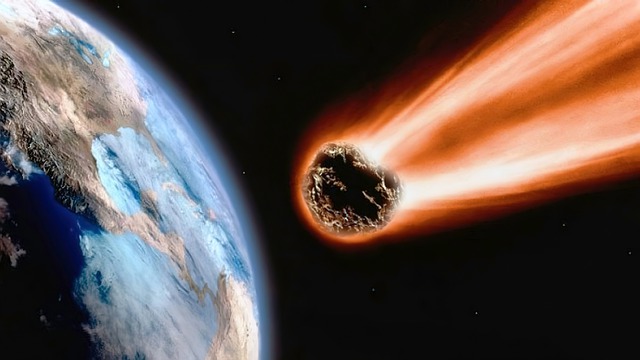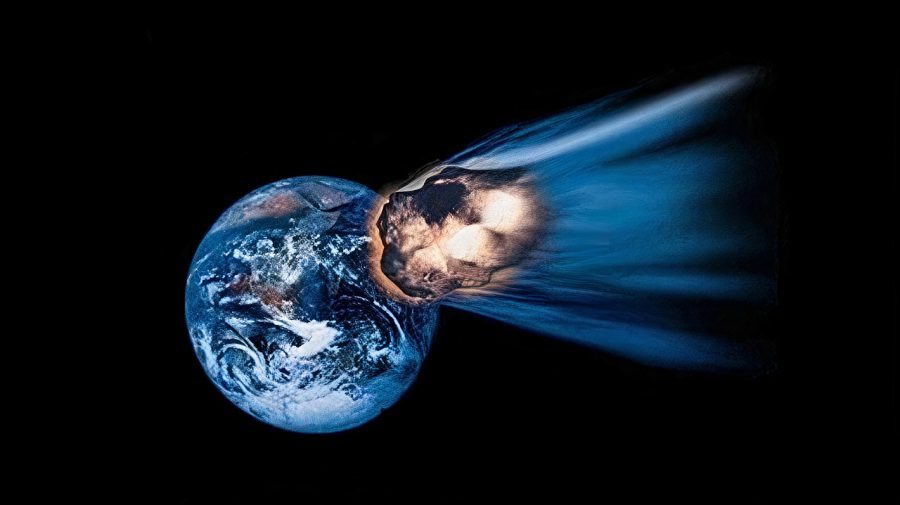It isn’t a joke or a prank, but a potential asteroid that is going to pass by earth.
Astronomers have confirmed that a potentially dangerous asteroid will be approaching Earth on Friday (April 1). It is about 3.2 times the size of Qutub Minar.
What Is Asteroid 2007 FF1?
The asteroid, known as 2007 FF1, is between 360 and 656 feet (110 meters and 260 feet) wide. Asteroid 2007 FF1 is known as the Apollo-class asteroid, which is about 15,000 asteroids.
The 2007 FF1 orbits the sun every 684 days (1.87 years), approaching close to 0.79 AU and reaching 2.25 AU from the sun. Based on its brightness, the 2007 FF1 is approximately 0.116 to 0.259 miles wide, making it an asteroid small to medium. The asteroid is classified as potentially dangerous because of its size and orbit near Earth.
A blurry image of a rocky outcrop facing us was taken by the Virtual Telescope Project on March 24, when the asteroid was 7.2 million miles(or 11.6 million km) from Earth. This is the first evidence confirming that the asteroid will make its flight to Earth as predicted by previous models.
The asteroid will be very close to Earth at 4:35 p.m. ET, where it will be about 4.6 million miles. According to estimates, the average distance between the Earth and the moon is 238,855 miles (384,400 km), according to NASA, which would make the asteroid 30 times farther away than the moon from Earth when it arrives.
The upcoming flyby is the world’s closest flight to the 2007 FF1 since its discovery in March 2007. In August 2020, the asteroid reached a distance of 10.8 million miles (17.3 million km) and was traveling at about 29,800 mph (47,950 km / h).
The next closest route is estimated to take place on April 2, 2037, when it will reach a distance of 4.9 million miles (7.9 million miles).
The CENOS facility has a viewing list of any Near-Earth Objects that may be closest in proximity. Even if both of these asteroids are in the NEO, a celestial or small planet or any other celestial rock whose orbits are close to or across the Earth’s orbit – they will not enter our atmosphere.
Both NASA’s Jet Propulsion Laboratory and CNEOS confirm that they will not hit the Earth or enter the internal channel, according to some reports.
Read: Mystery Solved: What Scientists Think of Asteroid Ryugu Origin?
Space Rough Visitors That Pass Through Earth Previously
Two rogue visitors from space flew near our home planet on the night of November 14. These rogue space rocks are Asteroid 2020 TB9 and Asteroid 2020 ST1. However, the Center for Near Earth Object Studies (CNEOS) said there will not be a fire show in the sky.

The Asteroid 2020 ST1 is both large with a size of 175 meters. To put it in perspective, Qutub Minar is 73 meters high; so approximately 2.3 Qutub Minar towers installed at the end will build the 2020 ST1 range.
It will cover a distance of 7.3 million kilometers and will pass through the Earth at a speed of 30 000 km / h. Both of these asteroids will not be visible to the naked eye and can only be seen by long-distance photography or telescope.
Apart from these two, the Asteroid 2020 VL1 and Asteroid 2019 VL5 will be flying through Earth on November 13 and 15, respectively. The 2020 VL1 will be three times the distance between the Earth and the moon, and the 2019 VL5 will be nine times farther away.
The other two, which flew on November 14, were a little closer. 2020 TB9, a small asteroid with a diameter of 30 meters, the length of a standard aircraft, will be 5 million kilometers. It flew at a speed of 21,600 km per hour (kmph) as it made it closer to Earth.
